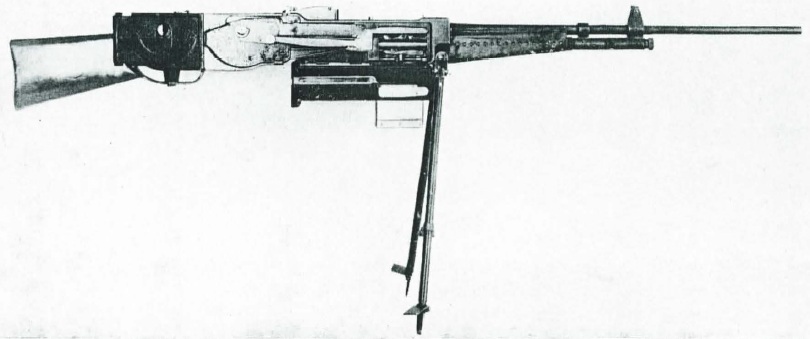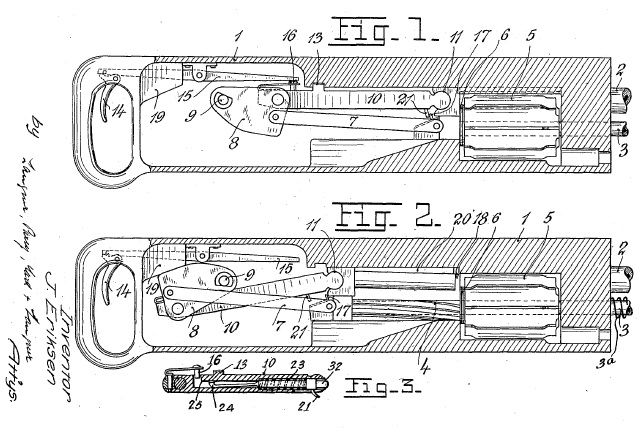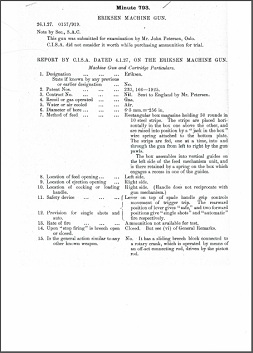Sometimes, there is just no good reason to build a gun design, and the Eriksen machine gun is a good example. A sample of the Eriksen machine gun was sent to the CISA (Chief Inspector of Small Arms) in 1927 for evaluation, and got no farther.

Part of the problem was that the gun was sent without any ammunition, which makes it somewhat difficult to test (it used a 6.5mm cartridge). But beyond that, it was a design which was different, but offered no apparent improvement over the machine guns already in service with the US military (which at the time were primarily Brownings, the 1919, 1917, and BAR). Its feed mechanism was similar to the Japanese Type 11, as it had a feed box which held 10 stripper clips of 5 rounds each. A spring mechanism would push the clips up, and the top one would feed into the left side of the gun. This sounds like a good idea to simplify logistics and have a units machine guns use the same ammunition as the riflemen, but it tends to be unreliable in use, because the mechanism is complex and easily stopped by dirt. The Russians also experimented with this type of feed with the Kubynov machine gun (a modification of the DP).
The Eriksen action used a round block pivoting around an offset pin powered by a gas piston to lock the breech. This is similar in theory to the Maxim toggle lock – as long as the pivot pin (9), rod connecting to the bolt face (10) and the firing chamber are on a line the breech will remain locked. Once the gas piston and its connecting rod (7) move rearwards, the line is broken and the breech can open easily.

Patents
US Patent #1,497,096 (J. Eriksen, “Machine Gun”, January 24, 1924)
Manuals
A couple pages from the CISA minutes are also available describing the actual Eriksen gun sent to the US for evaluation:


Yikes, that bipod looks seriously flimsy! Well, the entire gun looks flimsy… Since the contraption was Norwegian, it must have been chambered for the 6,5×55 round (I guess).
Wikipedia notes that the gun was sent to the BRITISH for examination, NOT sent to the U.S. Because a U.S. patent was filed doesn’t suggest examination in America. Such a patent may only be a consequence of being patented in England.
They used the single one they made against the German invasion of Norway in 1940, therefore we can say it served with honor.
I only noticed this site earlier today. I have two photoes that shed some more light on my great-grandfathers machine gun. He also designed and prototyped a water cooled “heavy” machine gun. The tri-pod of the latter is actually also his design. I can send pdf of the photos if I’m told how to do it.
You can reach me by email at admin@forgottenweapons.com .